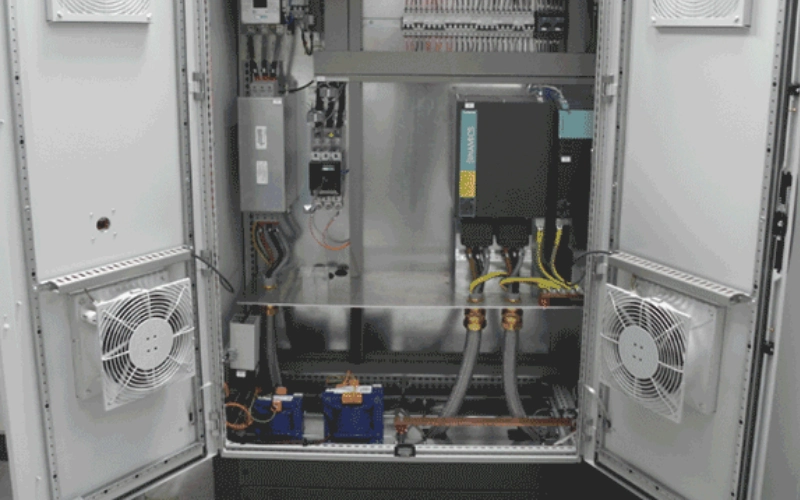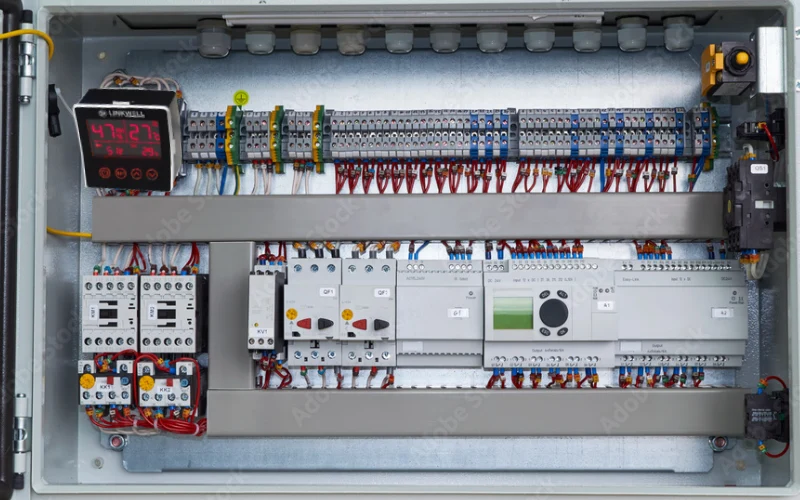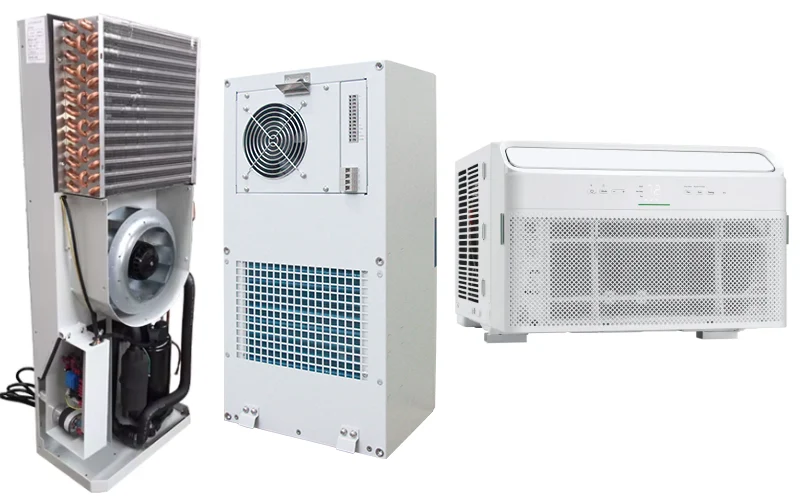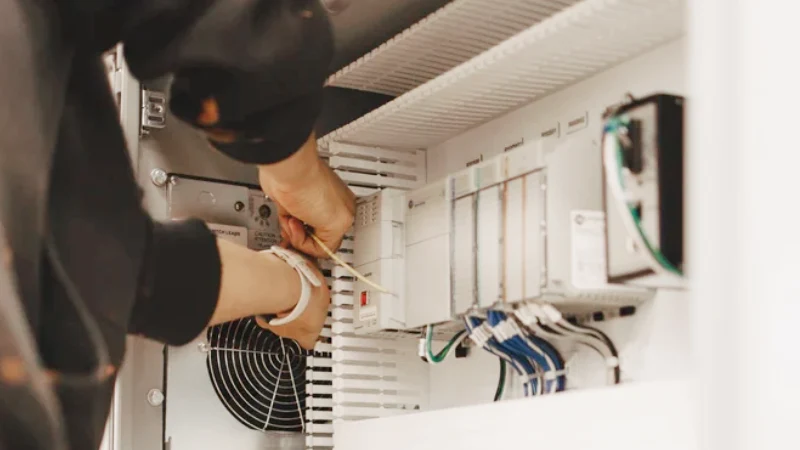Choosing the right enclosure isn’t just about size or color—it’s about creating a safe, sustainable, and reliable home for your electrical equipment. As a seasoned manufacturer of industrial and IT enclosures, we’ve seen firsthand how proper ventilation prevents disasters, boosts lifespan, and keeps certifications valid. This isn’t speculation—it’s real-world insight built over thousands of field installations. Let’s unpack exactly why ventilation matters and how you can leverage it to protect your systems.

What Are Electrical Enclosures? A Deep Dive into Their Purpose and Design
When someone mentions an “electrical enclosure,” most folks picture a simple metal box housing circuit breakers. But they’re much more: engineered barriers that protect equipment from moisture, dust, impact, and unauthorized access. Our enclosures serve industries ranging from telecom to wastewater treatment. Each must meet specific NEMA or IP ratings—like NEMA 4X for corrosive outdoors or IP66 for dust-tight water spray conditions.
In designing these, we balance protection with functionality. A heavy-duty cabinet with no airflow might keep rain out—but without ventilation, heat and moisture build-up could spell disaster for the electronics inside. That’s why, right alongside seals and gaskets, we build in ventilation strategies tailored to the environment and load the equipment will generate. Over decades, this hands-on engineering experience has shaped our manufacturing philosophy: your enclosure deserves purpose-built airflow.
Types of Enclosures and Their Usual Applications
Here’s a breakdown of typical enclosure styles and how they tie into ventilation needs:
- Interior Control Panels (NEMA 1/IP20): Often in climate-controlled rooms—low heat and dust. Passive ventilation typically suffices.
- Industrial Machine Cabinets (NEMA 12/IP54): These often see heating drives and motors in dusty factories. Active forced-air ventilation is common.
- Outdoor Equipment Houses (NEMA 3R/4X, IP66): Exposed to rain, sunlight, temperature swings—requires sealed or filtered vents with corrosion-resistant materials.
- Custom Racks & Data Cabinets: High-density electronics (servers, UPS). Active cooling or hybrid airflow with smart controls.
As manufacturer experts, we evaluate each scenario: is the heat load low and dust minimal? Passive vents. Is it outdoor with high heat or humidity? A robust fan/filter system with best-in-class seals and materials. That tailored thinking is what we build into every enclosure.
Electrical Enclosures Component
| Component | Function | Selection Considerations |
|---|---|---|
| Circuit Breakers | Protect circuits by interrupting current flow during overload or fault | Voltage/current ratings, number of poles, trip curve |
| Terminal Blocks | Provide safe and organized wire connections | DIN rail compatibility, wire size, color-coding |
| Relays & Contactors | Control high-voltage circuits with low-voltage signals | Coil voltage, contact ratings, switching frequency |
| Power Supplies | Convert AC to DC power for control components | Input/output voltage, wattage, redundancy |
| Programmable Logic Controllers (PLCs) | Automate machinery and process control | I/O capacity, communication protocols (Modbus, Ethernet/IP), expansion modules |
| Variable Frequency Drives (VFDs) | Control motor speed by varying input frequency | Motor size, heat dissipation, enclosure ventilation |
| HMI Panels (Human-Machine Interface) | Display data and enable operator input | Screen size, IP rating, communication ports |
| DIN Rails | Mount and organize components like relays and terminal blocks | Material (metal/plastic), mounting width (typically 35mm) |
| Wiring Ducts & Trays | Route and organize cables inside the enclosure | Size, flame retardance, ease of access |
| Cooling Fans & Filters | Regulate temperature by circulating air | Airflow (CFM), filter material, maintenance access |
| Membrane Vents | Equalize pressure while keeping dust/water out | IP rating (e.g. IP66), venting capacity |
| Fuses | Provide overcurrent protection for components | Amp rating, voltage class, time-delay vs. fast-blow types |
| Grounding Bars | Provide a common grounding point for safety and EMI shielding | Size, conductivity, compliance with NEC/IEC standards |
| Grommets & Cable Glands | Seal cable entry points to maintain protection rating | IP/NEMA rating, cable diameter, strain relief features |
| Lighting & Service Outlets | Improve visibility and access inside large enclosures | Voltage, bulb type (LED), placement, protective covers |
| Insulation Materials | Prevent electrical shorts and heat transfer | Dielectric strength, temperature resistance, flame rating |
| Monitoring Sensors | Measure temperature, humidity, or pressure | Integration with PLC/SCADA, accuracy, alarm thresholds |
| Nameplates & Labels | Identify circuits, components, and safety warnings | Adhesive type, UV/weather resistance, engraving vs. printed |
| Locks & Door Hardware | Secure the enclosure from unauthorized access | Key type, tamper resistance, corrosion resistance |
Why Ventilation Is Critical: Heat, Moisture & Pressure Explained
Thermal Management—Preventing Overheating and Extending Equipment Life
Electric drives, VFDs, motor starters, PLCs—they all produce heat. It adds up. Even moderate internal temps (just 10–15 °C above ambient) will shorten electronic component lifespans dramatically. IC reliability statistics show failure rates double for every 10 °C rise. In high-load environments, heat can hit 60 °C or more inside sealed cabinets—well above component limits.
From our experience, even basic convection via passive vents reduces internal temps by 5–10 °C. With forced-air systems designed around heat dissipation calculations (BTU/hr, CFM, ambient temps), we routinely achieve stable internal environments under 40 °C—even in 50 °C ambient outdoor summer heat. That consistent thermal control saves money by avoiding failures and replacements.
Moisture Control—The Hidden Enemy Inside Enclosures
Think heat is scary? Moisture will sneak in even with tight seals. Day-night cycles cause air to shrink and swell, pulling moisture inside through microscopic leaks. Once in, it condenses on internal components—leading to corrosion, intermittent shorts, brownouts, and more. Businesses with large fleets of control panels have told us moisture issues outpace heat damage by 3-to-1.
We integrate desiccant vents or pressure-equalizing membranes in coastal or food-processing enclosures. These handle moisture ingress without affecting ANSI/NEMA 250 or IEC 60529 IP ratings. Adding interior humidity monitors and alarm options is another upgrade we frequently include. It’s proactive maintenance—technology meets field-proven success.
Pressure Equalization—Safeguarding Seals & Ratings
With temperature changes, internal pressure fluctuates. Seals crack. Gaskets lose tension. A once-IP66 box becomes IP54 or lower overnight. That compromises electrical safety, voids certifications, and increases liability. Our standard approach is to add membrane vents certified to ISO PD 5115, balancing pressure while blocking contaminants.
We’ve seen seals last twice as long with membrane vents installed. Customers handling outdoor substations noted gasket compression remained within spec even after five years—proof that appropriate venting protects enclosure integrity in the long run.
Ventilation Options: Passive, Active & Hybrid Systems
Passive Ventilation—When Simplicity Works
Passive vents—louvers, grills, perforated panels—are low cost and no-power-needed. They rely on natural convection: cool air in low, hot air out high. Perfect for indoor, low-heat settings like NEMA 1 control cabinets.
From our build records, passive airflow reduces enclosure temperature 15–25% more than sealed enclosures in similar conditions. We specify UL-listed vent modules with insect screens and flame-trap capability. Installation involves aligning vents vertically above and below heat sources, keeping wiring racks clear to prevent blockage. These small details reflect our experience-based design—and that’s the difference between “acceptable” and “optimized.”
Active Ventilation—Fans, Filters & Mechanical Airflow
When heat loads exceed 150 W or ambient is above 30 °C, forced-air becomes mission-critical. We select and test IEC 61800-5-1 compliant fans with wash-down filters for dusty or oily environments. Our design process includes CFD modeling to ensure uniform cooling, minimized turbulence, and efficient airflow.
Customers have reported equipment life extensions of 20%–40% after upgrading to fan-filter units. We monitor filter pressure drop, recommend replacement intervals, and incorporate easy-access filters with color-coded change indicators—making maintenance intuitive and compliance-ready.
Hybrid Approaches—Balancing Efficiency & Cost
In many real-world settings—warehouses, outdoor cabinets in temperate zones–hybrid systems offer optimum efficiency. Passive vents manage low-load phases, and fans activate only when internal temp crosses a set threshold (e.g. 40 °C). This saves energy, reduces fan wear, and maintains efficiency.
Our hybrid designs have seen the approval of UL 50E thermal circulation tests, confirming reliability. A semiconductor plant recently cut energy use by 25% after switching to our hybrid-cooled enclosures.
Standards & Best Practices for Ventilated Enclosures
NEMA 1–4X and IP20–IP66 Rating Requirements
Ventilated enclosures must still meet enclosure rating standards:
- NEMA 1/IP20: Venting only fine particles—basic requirements met by louvers and flame traps.
- NEMA 3R/4/4X: Resist water spray and windblown dust. We use vent systems with IP66 membrane filters rated per IEC 60529, keeping water out even under heavy spray.
- NEMA 12/IP54: Protect from oil splash, coolant. Required fan-filter units comply with UL 50/50E.
Our manufacturing specs list the part numbers, airflow ratings, and directional placement for each vent module—ensuring built-in compliance for both listing and inspection audits.
UL 508A, IEEE Std C37.20.1 Compliance
Electrical safety demands tested vented enclosures. UL 508A panel builders know that thermal reliefs, pressure equalization, and fire containment must be verified during panel inspection. We supply enclosures pre-labeled with airflow path marking, vent type, and qualified under UL listings. High-voltage switchgear also needs pressure reliefs per IEEE C37.20.1, which we offer integrated with guided blast vents.
By anticipating these certification requirements, our enclosures help you pass audits the first time—saving weeks in delay and thousands in rework.
Real-World Insights from Customers & Wholesalers
Wholesaler Praise: Reliability and Cost Savings
Mr. Chen, a Delta distribution manager, shared:
“Switching to Eabel ventilated enclosures cut our failure rate by over 70%. The modular venting system made processing 500 cabinets seamless—we saw ROI in under six months.”
Independent wholesalers regularly highlight our dependability. One feedback:
“The pre-mounted filter-fan combos and easy-to-install louvers outperformed competitors. We’re hearing fewer field returns—and that saves us time, money, and reputation.”
Terminal End-User Feedback: Performance in the Field
An industrial bakery reported:
“Our enclosure temps dropped from 70 °C to 45 °C after installing your hybrid ventilated panels—our circuit boards last twice as long now.”
A wastewater utility said:
“Your 4X cabinets with membrane vents survived coastal spray and salt exposure for three years with zero corrosion. That’s unheard of with our previous supplier!”
These real-world cases show that our designs deliver measurable benefits: lower failure rates, lower maintenance, longer life. That’s reliability you can bet on.
When You Need Enclosure Ventilation — and When You Don’t
High-Heat & Industrial Machines
Use ventilation when internal heat tops 150 W or component hotspots exceed 50 °C. Examples: VFDs, motor drive cabinets, high-current transformer housings. Without airflow, electronics degrade quickly—even UL thermal tests fail.
Outdoor and Coastal Applications
If your enclosure is exposed to sun, rain, salt, or temp swings over 40 °C daily, you need membrane venting and corrosion-resistant fans. We engineer these for IP66 marine-rated specs.
Low-Power or Controlled Environments
In offices, server closets, or low-load production lines (<50 W), sealed NEMA 1/IP20 enclosures still work fine—passive venting optional. But always leave options for future upgrades.
Designing Effective Ventilated Enclosures—A Manufacturer’s Checklist
Component Layout & Air Channels
- Map airflow paths around hot components like VFDs, power supplies, or battery banks.
- Elevate heavy wiring to avoid airflow obstruction.
- Use baffles or ducting between compartments to separate hot and cool zones.
Vent Placement, Filter Selection & Maintenance Access
- Inlets low, outlets high to use convection.
- Use UL- or CSA-listed flame-trap filters on vents to meet safety codes.
- Include tool-less doors or drawer access panels for ease of filter replacement and fan cleaning.
Testing & Quality Assurance
- Conduct thermal imaging after assembly under max load to confirm airflow effectiveness.
- Pass UL 50E internal pressure tests and IEC 60068 environmental testing (humidity, salt fog, dust).
- Supply each enclosure with a certificate of compliance, vent listing, and evidence of gasket integrity.
This builds trust, reduces customer questions, and backs claims with documentation—and our brand lives by this rigor.
FAQs
Why is ventilation important in electrical enclosures?
Airflow controls heat, moisture, and pressure—key factors that affect longevity, performance, and safety.
Can a sealed enclosure work without ventilation?
Yes—if internal heat is low and environment controlled. But sealed enclosures are vulnerable to moisture and thermal spikes.
What standards apply to ventilated enclosures?
NEMA 1–4X, IP20–IP66, UL 508A, IEEE C37.20.1, IEC 60529, UL 50E, and ISO 11855 membrane vent tests.
Should I use passive or active ventilation?
Passive if heat load is moderate and environment mild. Active if heat exceeds ~150 W or external temp > 30 °C. Hybrid works well across conditions.
How often should vents be maintained?
At minimum every 3–6 months. In dirty or coastal environments, quarterly maintenance is best. Filter pressure drop should be checked monthly.
Will ventilation affect my enclosure’s IP/NEMA rating?
Only if you omit rated filters or improper seals. With correct membrane vents and flame filters, ratings like IP66 and NEMA 4X remain intact.
Conclusion
Do Electrical Enclosures Need Ventilation isn’t a “nice-to-have”—it’s essential to protect your electrical investment. From our expert perspective as a manufacturer, correct airflow design means fewer failures, longer service life, improved certifications, and real-world savings. By choosing best-in-class vent modules, fans, filters, and guidance tailored to your application, you ensure reliability and safety in any environment.
Want an enclosure that thoughtfully balances airflow, protection, and longevity? Eabel’s ventilated enclosures deliver proven performance—designed by professionals, backed by standards, and validated by customers. Contact us today to find your perfect ventilated enclosure solution.




